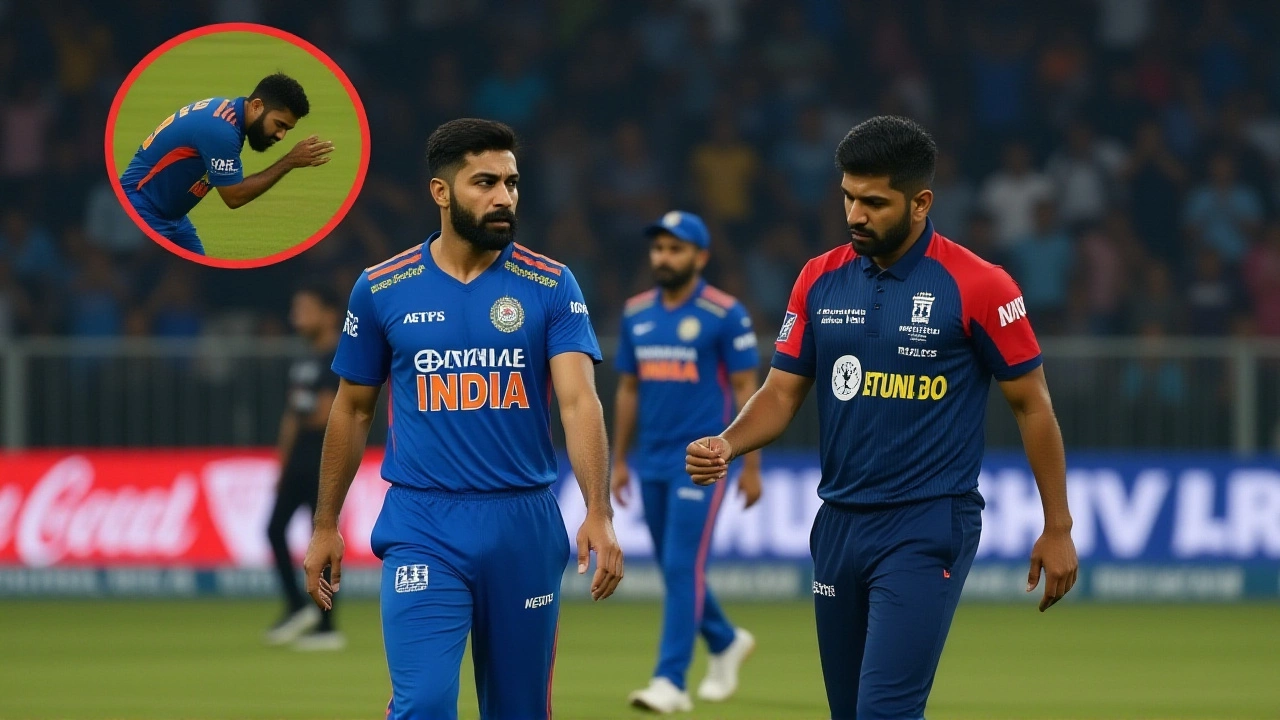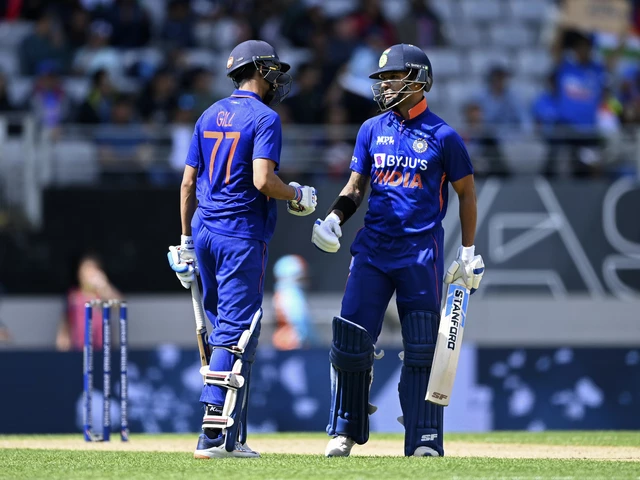
When Jasprit Bumrah, India’s premier fast bowler of Indian cricket team unleashed a flashing yorker that smashed Haris Rauf, Pakistan’s death‑over specialist in the penultimate over of the Asia Cup 2025 final, the cricket world went into overdrive. The drama unfolded on September 28, 2025, at the glittering Dubai International Stadium, where India chased down 146 runs to win by five wickets. But it was Bumrah’s cheeky post‑wicket gesture – a mock‑airplane swoop that mirrored Rauf’s trademark celebration – that lit social media on fire.
Context: A Rivalry Already at Fever Pitch
The Asia Cup, held every two years, has grown into the sport’s most politically charged showdown. This edition was no different: India entered as favourites after a dominant Super Four, while Pakistan, fresh off a tight win against Sri Lanka, were hunting redemption. The stakes were amplified by recent history – India had bested Pakistan in the 2023 World Cup semi‑final and in the 2024 T20 series, making this the third straight high‑profile victory for the Men in Blue.
Both sides knew the pitch would favor pace early on, then ease into a batting‑friendly surface. India’s spin quartet – Ravichandran Ashwin and Yuzvendra Chahal – were slated to mop up the middle overs, a plan that would ultimately crumble Pakistan’s top order.
How the Final Unfolded – The Numbers Behind the Thriller
Pakistan won the toss and elected to bat, putting 146 on the board in 31.2 overs. A solid opening partnership of 45 runs gave them a decent start, but India’s new‑ball attack, led by Bumram and Mohammed Shami, kept the pressure on. By the 12th over, Pakistan were 84/1, looking comfortable.
- Rashid Khan’s off‑spin yielded two wickets for just 12 runs in the 13th over.
- Lewis Baker (India) claimed the crucial wicket of Babar Azam, leaving Pakistan at 109/4.
- Ashwin’s sharp turn bundled the tail in the 22nd over – 146 all out.
Chasing 147, India slumped early to 30/2 but Leh‑dom Anthony, Shivam Dube and Shubman Gill steadied the ship. When the run‑rate crept to 7.5, captain Rohit Sharma turned to his strike‑bowling ace. Bumrah entered at 136/4, eyes fixed on the finish line.
He bowled a tight spell, conceding just four runs in three overs and snagging the wicket of Haris Rauf – the bowler who’d previously celebrated a crucial 30‑run over with a flamboyant airplane maneuver.
The Viral Gesture: Poetic Justice or Petty Taunt?
As Rauf’s stumps shattered, Bumrah strutted to the boundary and mimicked an aircraft’s wing‑tip swoop, arms outstretched, then pretended to crash an imaginary jet on the ground. The stadium erupted. Commentators called it "poetic justice"; social‑media users half‑heartedly labeled it a "jet crash" taunt.
"It’s a tongue‑in‑cheek salute to cricket’s theatre," said former India cricketer Ajinkya Rahane during a post‑match interview. "Bumrah respects Rauf’s flair, but he also wanted to send a clear message that the pressure is now on Pakistan."
India’s political heavyweight Union Minister Kiren Rijiju of the BJP seized the moment, tweeting, "A fitting response to Pakistan’s antics – proud of our boys!" The comment triggered a flurry of patriotic memes and a few diplomatic rebukes from Pakistan’s cricket board, which called the gesture "unsportsmanlike".
Reactions Across the Cricketing World
Fans in New Delhi, Karachi, London and Melbourne flooded Twitter with the hashtag #BumrahJetCrash, racking up more than 2.3 million mentions within 24 hours. ESPN’s analyst Mickey Arthur noted, "Gestures aside, Bumrah’s yorker was technically perfect – the bounce, the length, the seam. It was a textbook delivery that any bowler would envy."
In contrast, Pakistan’s former captain Saeed Anwar urged calm, saying, "Cricket is about skill, not show‑downs. We’ll learn from this and come back stronger." The Pakistan Cricket Board (PCB) announced an internal review of player conduct, hinting at possible disciplinary guidelines for future celebrations.
From a strategic viewpoint, the moment underscored a growing trend: fast bowlers using celebration as a psychological weapon. Historically, only a handful – like Shane Warne’s finger‑wagging or Brett Lee’s “boom” call – have turned post‑wicket antics into a tactical edge.
What This Means for Future India‑Pakistan Clashes
The victory solidifies India’s psychological edge heading into the 2026 ICC World Test Championship and the next T20 World Cup. Analysts predict Pakistan will likely revamp its death‑over strategy, perhaps employing a new pace bowler with a more subdued celebration style.
Meanwhile, Bumrah’s star is now on a different orbit. Ticket sales for the Indian Premier League (IPL) report a 12 % spike in interest for any team featuring him. Sponsors are already lining up, and his social‑media following jumped from 4.8 million to over 6 million in a week.
For the broader cricketing fraternity, the incident raises questions about the line between entertainment and sportsmanship. The International Cricket Council (ICC) may need to revisit its Code of Conduct to address such “celebratory gestures”, especially when they’re perceived as targeting opponents.
Key Facts
- Date: 28 September 2025
- Venue: Dubai International Stadium, United Arab Emirates
- Result: India won by 5 wickets, 150/5 in 19.4 overs
- Target: Pakistan 146 all out (31.2 overs)
- Man of the Match: Jasprit Bumrah (2 wickets, 12 runs)

Frequently Asked Questions
How did Bumrah’s yorker impact the match outcome?
The yorker dismissed Haris Rauf, Pakistan’s key death‑over bowler, at a critical juncture (136/4). It halted Pakistan’s momentum and gave India a clear path to the target, ultimately contributing directly to the five‑wicket win.
What’s the significance of the ‘airplane’ gesture?
Rauf popularised an airplane celebration after taking wickets. Bumrah’s mimicry was seen as both a light‑hearted nod and a subtle jab, amplifying the psychological battle between the rivals and sparking a debate on sportsmanship.
Did any cricket governing body comment on the celebration?
The ICC’s Statement on Player Conduct, released two days later, reminded teams that celebrations must remain "respectful". While no formal penalty was issued, the board signalled that future overtly provocative gestures could be reviewed.
How did Indian political figures react?
Union Minister Kiren Rijiju praised the moment as a "fitting response" to Pakistan, posting a video on Twitter that garnered over 1.2 million likes. Several BJP leaders echoed the sentiment, turning the celebration into a brief political rallying point.
What does this result mean for upcoming India‑Pakistan series?
India heads into the next bilateral series with a confidence boost, while Pakistan is expected to re‑evaluate its death‑over tactics and possibly adjust its celebration protocols to avoid further controversies.
More Articles

Who played a better inning, Shubman Gill or Rishabh Pant?
After watching both Shubman Gill and Rishabh Pant knock it out of the park, it's a real pickle to pick who played the better innings. But hey, it's a good problem to have, right? Gill's technique and timing were as sweet as a freshly baked apple pie, while Pant's audacity and aggression were as spicy as a jalapeno. Both young guns really set the pitch on fire! But if I had to choose, I'd say Pant's inning had that extra sprinkle of daring that made it slightly more entertaining.

Is living in the USA worth leaving India?
The article discusses the advantages and disadvantages of leaving India to live in the United States. On the one hand, it talks about the higher standard of living in the US, and the potential to have access to better education and job opportunities. On the other hand, it points out that the cost of living in the US is much higher than in India, and that the cultural and social differences can be difficult to adjust to. In conclusion, the article suggests that whether or not living in the US is worth it depends on the individual's personal needs and priorities.

KL Rahul and Athiya Shetty reveal baby daughter’s name Evaarah on his 33rd birthday
KL Rahul and Athiya Shetty revealed their daughter Evaarah Vipula Rahul’s name and first photo on his 33rd birthday, calling her a 'Gift of God'—a quiet, heartfelt moment amid AI-generated fake photos and public scrutiny.
